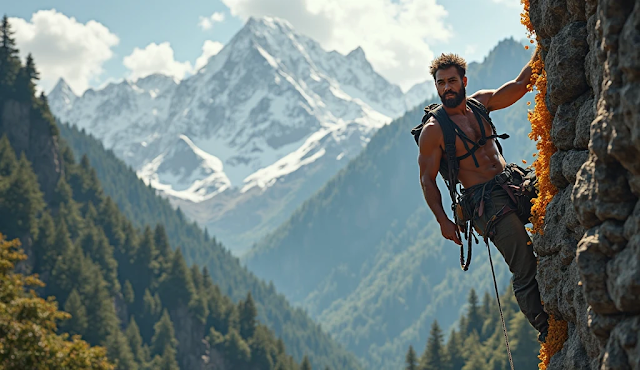Mount Everest has witnessed countless feats of human endurance, but few are as groundbreaking as Mark Inglis’ 2006 summit. As the first double amputee to reach the world’s highest peak, Inglis redefined the limits of adaptive mountaineering. His story blends resilience, innovation, and controversy, making him a pioneering figure in climbing history.
Early Life & The Accident That Changed Everything
A Passion for Adventure
Mark Inglis, born in 1959 in New Zealand, grew up with a love for the outdoors. By his 20s, he was an accomplished mountaineer and search-and-rescue volunteer.
The 1982 Avalanche Disaster
In 1982, tragedy struck during a climb on New Zealand’s Mount Cook. Inglis and his climbing partner were trapped in an ice cave for 13 days during a blizzard. Severe frostbite led to the amputation of both legs below the knees.
Key Impacts of the Accident:
Physical: Adjusted to prosthetic legs.
Mental: Faced societal stigma around disability.
Career Shift: Transitioned from rescue work to biotechnology and winemaking.
The Road to Everest: Defying Limits
Reigniting the Mountaineering Dream
Despite his disability, Inglis returned to climbing in the 1990s. He leveraged custom-designed prosthetics and adapted techniques to tackle peaks like Mount Cook (1993) and Cho Oyu (2004).
Why Everest?
Inglis viewed Everest as the ultimate test of his capabilities. He stated:
“I wanted to prove that disability doesn’t define what’s possible.”
The Historic 2006 Everest Expedition
Preparing for the Impossible
Inglis trained for two years with a specialized team. His gear included:
Carbon-fiber prosthetics with ice-gripping soles.
Modified climbing tools for enhanced grip.
Battery-powered heated socks to prevent frostbite.
Summit Day: May 15, 2006
Inglis and his team faced brutal conditions:
-25°C temperatures.
Oxygen levels at 33% of sea level.
A 22-hour final push from Camp IV to the summit.
At 9:00 AM, Inglis stood atop Everest, declaring:
“This isn’t just my victory—it’s for every person told they can’t.”
Challenges & Controversies
Physical Obstacles
Prosthetic Limitations: No ankle flexibility for balancing.
Stump Blisters: Friction caused open wounds.
Frostbite Risk: Exposed residual limbs.
Ethical Debates
Inglis’ climb sparked controversy after his team passed David Sharp, a dying climber, during their ascent. Critics argued they prioritized summiting over rescue efforts. Inglis later defended the decision, citing the “death zone” logistics.
Legacy of a Pioneering Mountaineer
Redefining Adaptive Climbing
Inglis’ achievement inspired innovations in prosthetic technology and opened doors for disabled athletes. Notable impacts include:
Increased Sponsorship for adaptive climbers.
Design Advances: Lightweight, cold-resistant prosthetics.
Awareness: Highlighted disability inclusion in extreme sports.
Post-Everest Achievements
Motivational Speaking: Advocates for disability rights globally.
Wine Career: Runs a award-winning vineyard in New Zealand.
Author: Wrote “No Mean Feat” detailing his Everest journey.
Conclusion: A Symbol of Human Resilience
Mark Inglis’ 2006 Everest summit remains a landmark in mountaineering history. By conquering the world’s tallest peak with prosthetic legs, he shattered stereotypes and proved that disability is no barrier to greatness. His story continues to inspire climbers and non-climbers alike to chase “impossible” dreams.
Adaptive climber, frostbite amputation, prosthetic technology, death zone ethics, inspirational speaker, disabled athletes, carbon-fiber prosthetics.







0 Comments